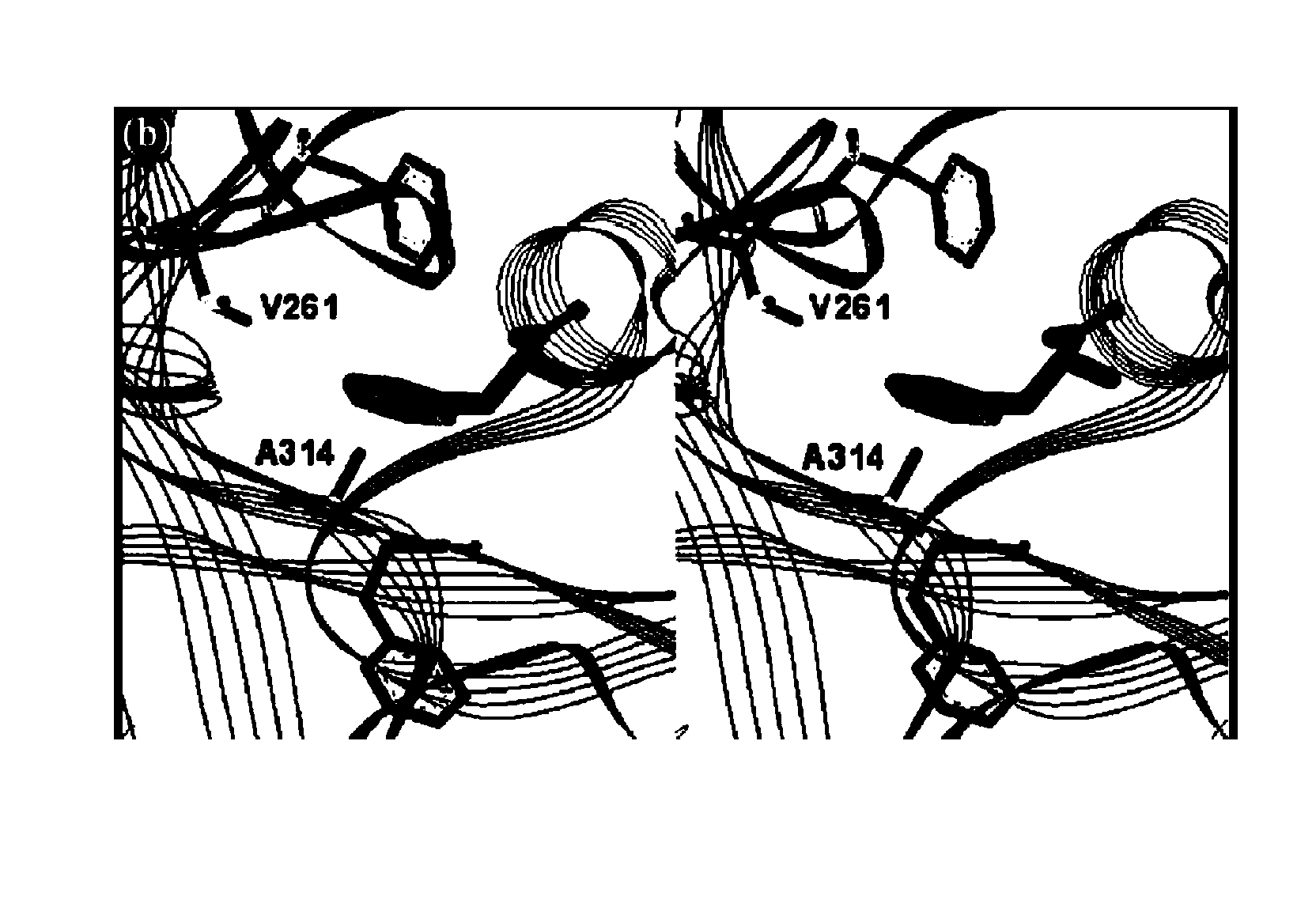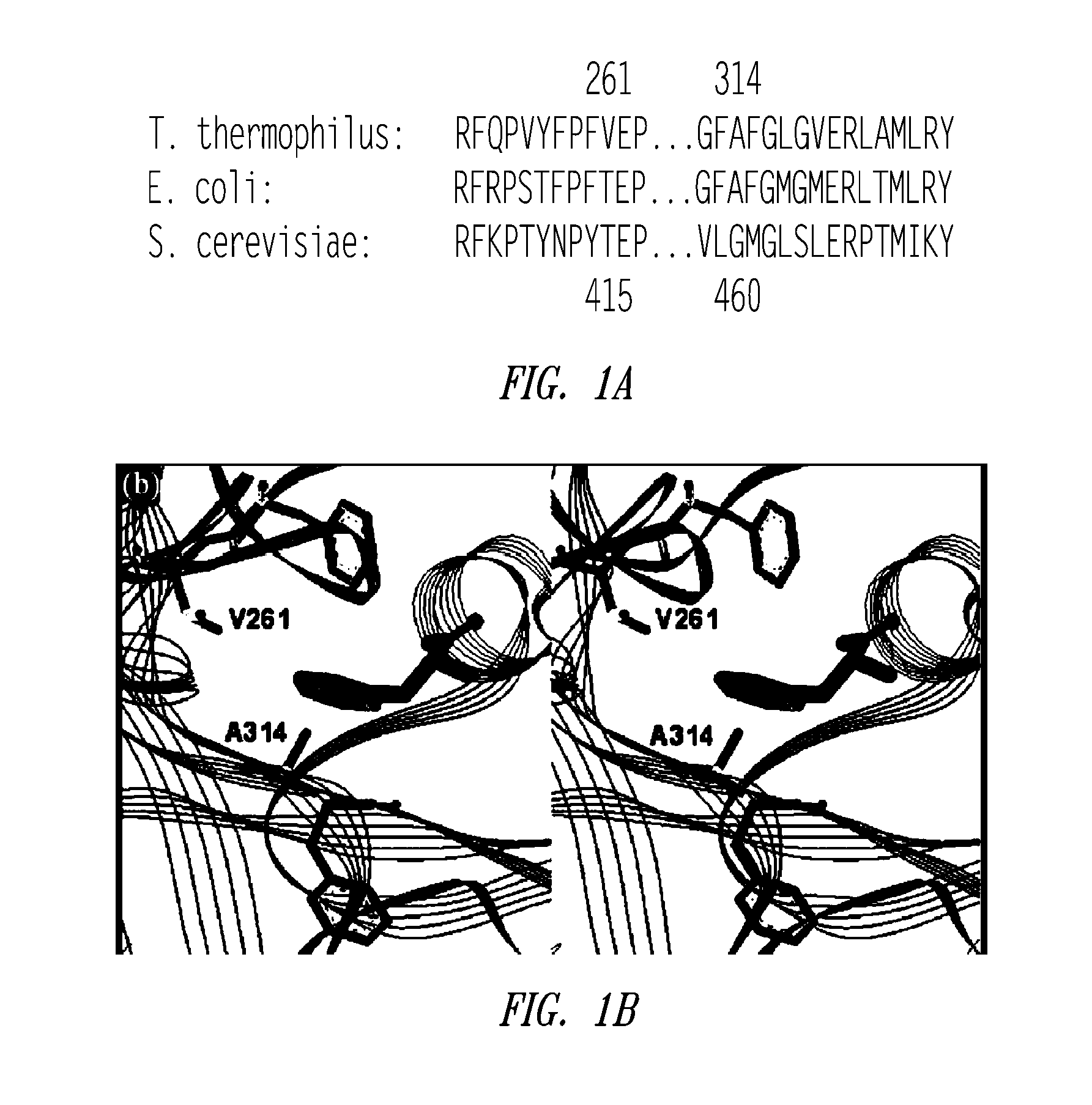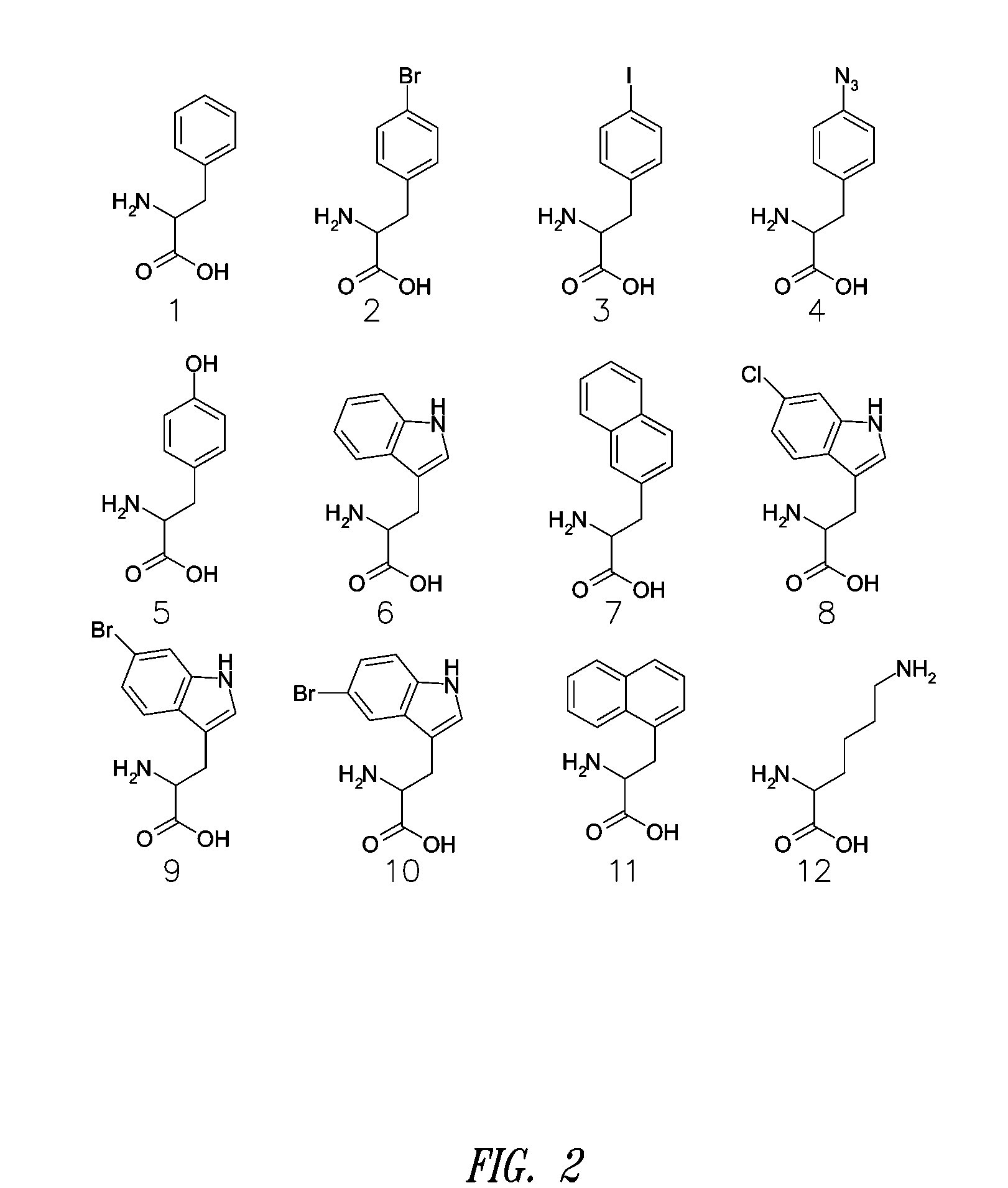Site-specific incorporation of amino acids into molecules
a technology of amino acids and sites, applied in the field of site-specific incorporation of amino acids into molecules, can solve the problems of limited utility of multisite position specific (versus residue specific) substitution or incorporation, and the restriction of mutagenesis to the 20 naturally occurring amino acids
- Summary
- Abstract
- Description
- Claims
- Application Information
AI Technical Summary
Benefits of technology
Problems solved by technology
Method used
Image
Examples
example 1
[0371] In order to alter the capability of a yeast aminoacyl tRNA synthetase, the yPheRS gene was amplified from template plasmid pUC-ASab2 encoding alpha and beta subunits of the PheRS gene. The amplification was conducted with a 14 base pair intergenic sequence containing a translational reinitiation site upstream of the ATG start code of the beta subunit gene.
[0372] The following oligo primers were used for the PCR: 5′-CGA TTT TCA CAC AGG ATC CAG ACC ATG ATT CTA G-3′ (SEQ ID NO:7) (primer 1 with restriction site BamHI) and 5′-GAC GGC CAG TGA ATT CGA GCT CGG TAC-3′ (SEQ ID NO: 8) (primer 2 with restriction site KpnI). The resulting DNA product was introduced into the BamHI and KpnI sites of pQE32 to give pQE32-yFRS. The mutant yPheRS polynucleotide was generated by using primer mutagenesis by standard techniques.
[0373] Briefly, two complementary oligonucleotides: 5′-CTA CCT ACA ATC CTT ACG GCG AGC CAT CAA TGG AAA TC-3′ (SEQ ID NO:9) (primer 3) and 5′-GAT TTC CAT TGA TGG CTC GCC ...
example 2
[0374] The plasmid pQE32-yFRS, and pQE32-T415G, pQE32-T415A were each transformed into E. coli host cell strain BLR (from NOVAGEN®) to form expression strains BLR(pQE32-yFRS_ and BLR(pQE32-T415G). Cells were grown in LB media, to a concentration of 0.6 at OD 600. Expression was then induced with 1 mM IPTG for 4 hours. Cells were harvested and polypeptides were purified by way of a nickel-nitrilotriacetic acid affinity column under native conditions according to the manufacturer's protocol (QIAGEN®). The imidazole in the elution buffer was removed by desalting column, and polypeptides were eluted into a buffer containing 50 mM Tris-HCl (pH=7.5), 1 mM DTT. Aliquots of polypeptides were stored in −80° C. with 50% glycerol.
example 3
[0375] The amino acid dependent ATP-PPi exchange reaction was used to evaluate the activation of non-natural amino acids by yPheRS. The assay was performed in 200 microliters of reaction buffer containing 50 mM HEPES (pH=7.6), 20 mM MgCl2, 1 mM DTT, 2 mM ATP and 2 mM [32P]-PPi with specific activity of 0.2-0.5 TBq / mol. Depending on the activity of the various non-natural amino acids with the synthetase, the amino acid concentration varied from 10 microM to 5 mM and enzyme concentration varied from 10 nM to 100 nM. Aliquots of 20 microliters were removed from the reaction solution at various time points and quenched into 500 microliters of buffer solution containing 200 mM NaPPi, 7% w / v HClO4 and 3% w / v activated charcoal. The charcoal was spun down and washed twice with 500 microliters of 10 mM NaPPi and 0.5% HclO4 solution. The radio-labeled ATP absorbed into the charcoal was quantified via liquid scintillation methods. The specificity constants were calculated by nonlinear regress...
PUM
| Property | Measurement | Unit |
|---|---|---|
| Fraction | aaaaa | aaaaa |
| Fraction | aaaaa | aaaaa |
| Fraction | aaaaa | aaaaa |
Abstract
Description
Claims
Application Information
 Login to View More
Login to View More - R&D
- Intellectual Property
- Life Sciences
- Materials
- Tech Scout
- Unparalleled Data Quality
- Higher Quality Content
- 60% Fewer Hallucinations
Browse by: Latest US Patents, China's latest patents, Technical Efficacy Thesaurus, Application Domain, Technology Topic, Popular Technical Reports.
© 2025 PatSnap. All rights reserved.Legal|Privacy policy|Modern Slavery Act Transparency Statement|Sitemap|About US| Contact US: help@patsnap.com



